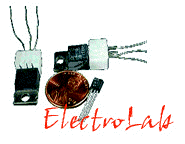






![]()
BASIC
Semiconductors are any of a class of solids, for instance Germanium or Silicon, whose amount of electricity it conducts is between that of a conductor and that of an insulator. This means that they will be nearly metallic at high temperatures, and nearly absent at low temperatures.

Comparision between conductors, semiconductors and insulators
Semiconductors have been used for many things and are implemented in several different devices which are all explained in the Applications section. You will find many things like electronic cooling, transistors, photoconductors and integrated circuits.
First of all, there are two types of semiconductors that carry electric current:
1) Intrinsic Semiconductors
You can probably see the letters "in" in Intrinsic, this normally means that something is happening inside. So at room temperature, some of the electrons absorb thermal energy from their surroundings, which means they take it in. Due to this, they get freed from their combination, or in scientific terms, get liberated. What this also forms are things called "holes". Holes are spaces which don't have any electrons, and are therefore positively charged. When something is positively charged, it means that there are more protons (positively charged particles) than electrons (negatively charged particles) and therefore there is an imbalance between the two, and whichever particles there are more of, the space then becomes, in this case, positively charged.


To see this animation again, please
Refresh/Reload the page.
The movement of the holes and of the electrons in opposite directions is what makes the electric current when a P.D. is applied. But the only problem is that the current which it produces is very small and weak. What this means is that in an intrinsic semiconductor, because there are a lack of electrons, its use is very limited as an electronic device.
2) Extrinsic Semiconductors
In extrinsic semiconductors, certain things (called impurities) are added to them to make the capacity to carry current stronger. In science, there is a term for this, we say the semiconductor is "doped".
There are two types of impurities that can be added to semiconductors to increase their
current-carrying capacity:
1) Donor or n-type impurity
This increases the density of electrons which act as majority charge carriers,
constituting an electric current.
2) Acceptor or p-type impurity
With this type of impurity, in short, 'holes' are created and their movement causes a
current, which results in the 'holes' acting as positive charge carriers.